

How to Make Beeswax Leather Conditioner & Shoe Polish - Homestead How-To. This post may contain affiliate links and/or advertisements, which means that Homestead How-To earns advertising fees or commissions if you click on a link or make a purchase.
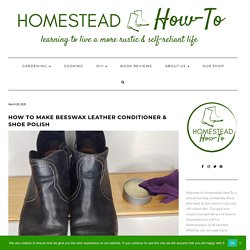
As an Amazon Affiliate, we earn commission on qualified purchases. Visit our affiliate disclosure page to learn more. The views expressed by authors on this site are based on their experiences only; Homestead-How To in no way provides any warranty, expressed or implied, toward the content of these articles. Please use at your own risk. This recipe creates a beeswax balm that both conditions and polishes leather, such as boots, purses, and other items.
I’m happy to rescue these boots, fix them up, and find them good homes (see my post about online resale). This recipe for this beeswax shoe polish and leather conditioner was created after a few trials to find the right blend. 5 Ways to Live a More Self-Reliant Life STARTING TODAY! The journey to self-reliant living starts with one step. Thank you! Supplies Related. Native born remedies – Forest & Bird. Guest Blogger: Ethnobotanist at Landcare Research, Sue Scheele Over the next few months, Sue Scheele will write a series of blogs on the medicinal uses of our home-grown plants.

First up, the ubiquitous kawakawa – cough clearer, tooth-ache reliever and headache buster. Make your own Kawakawa herbal healing salve - thisNZlife. How to Make Beeswax Wraps That Work! DIY Plastic Free Alternative. One of the biggest game changers in our plastic free kitchen adventure was discovering how to make beeswax wraps.
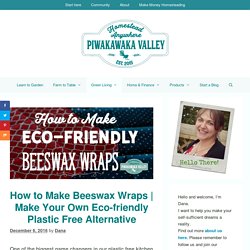
Plastic wrap, cling film, gladwrap – whatever you want to call it, it is everywhere. Encaustic Painting Workshops - Wax Works NZ - Encaustic wax art supplies. Go Native New Zealand. The Permaculture Research Institute. It was some time ago, over a year to completely admit the extent of my procrastination, that I was working through a breezeblock of a book entitled The Art of Fermentation, by Sandor Katz, the modern Moses of the dark and mysterious process.

It all sounded so fun, so magical for a guy who loves a tip of the tipple but has never made his own, and I couldn’t help but plot out my adventures in food preservation and, more so, homespun libations. Until recently, I’d never fermented anything, at least not on purpose, and it was from this privileged position that I began. How to make a tonic with kūmarahou.
Rongoā practitioner Donna Kerridge explains how to make a simple decoction for respiratory conditions and digestion.
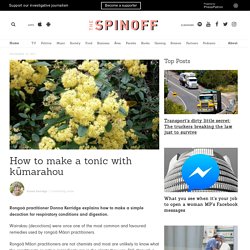
Wairakau (decoctions) were once one of the most common and favoured remedies used by rongoā Māori practitioners. Rongoā Māori practitioners are not chemists and most are unlikely to know what the constituents or active ingredients are in the plants they use. Still, through a strong connection to the land and their intimate knowledge of the symbiotic relationships that flourish within the ngahere, practitioners have developed many effective New Zealand plant remedies that are as relevant in a modern world as they were generations ago.
Shopping Cart. How To Make Soap: Homemade Natural Hand and Body Bar Soap Recipe. Natural Soap Colorants: 44 Ways to Color Your Homemade Soap Naturally. As a follow up to last week’s article on homemade soap, this article will explore a number of ways you can color your soap naturally.
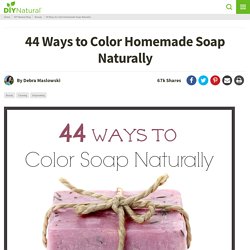
Natural Soap Colorants With natural colorants you won’t get the bold, vibrant hues that commercial soaps give you. (Remember most of those are artificially colored.) Instead, you get the soft to deep muted tones that nature intended. While some give you only color, some natural colorants give you more, such as exfoliation, antioxidants or other benefits. You can see that many of the natural items used in soap making are similar to (if not the same as) those used in coloring fabrics or naturally coloring hair. How To Make Soap: Homemade Natural Hand and Body Bar Soap Recipe.
Homemade Shampoo Bar: Make Natural DIY Shampoo Bars. Make your own Kawakawa herbal healing salve - thisNZlife. Spotlight on Kawakawa. The bright green heart-shaped leaves of Kawakawa (Macropiper exelsum) are a distinctive presence in the New Zealand bush, and Kawakawa’s medicinal properties are equally distinctive.
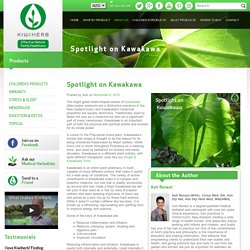
Traditionally used by Maori not only as a medicine but also as a significant part of many ceremonies, Kawakawa is an important part of both the physical and spiritual worlds and revered for its innate power. A cousin to the Polynesian Kava plant, Kawakawa’s similar leaf shape is thought to be the reason for its being christened Kawa-kawa by Maori settlers. While Kava root is drunk throughout Polynesia as a relaxing drink, and used by herbalists for anxiety and sleep disorders, Kawakawa is a different plant entirely, with quite different therapeutic uses like our Ginger & Kawakawa Tonic. Kawakawa is an entire plant pharmacy in itself, capable of many different actions that make it useful for a wide array of conditions.
How to Make Manuka Kawakawa Salve. Manuka Kawakawa Salve. In December 2017 I visited beautiful New Zealand, and it was an absolute dream come true.

Wonderful weather, breathtaking scenery, and everyone I met was downright lovely. On my last day I visited Melissa and Emmett at Pure Nature in Auckland, and I so wish I could’ve spent all day there! The shop is beautiful and was absolutely packed with all kinds of things I can’t get in Canada, many of which I’d never heard of. I had so much fun sampling all kinds of beautiful carrier oils and sniffing bottle after bottle of exotic essential oils. I left with two extremely well oiled arms! Also, before we dive in—this is the 1000th post on Humblebee & Me! Want to watch this recipe instead of read it? Watch Now. Onerahi School - The Recipe for KawaKawa Balm. Do you want to make your very own KawaKawa balm?

It is good for dry lips, sun burns and cuts. Here is the recipe. Ingredients: 12 kawakawa leaves 1 litre of olive oil 1 1 cup of beeswax half a hand full of lavender flowers for scent (optional) Equipment: Kawakawa and Active 15+ Manuka Honey Ezcema Skin Balm. Megannan’s Bush Balm Recipe. Manuka Honey & Kawakawa Balm – Beekeeper's Daughter.